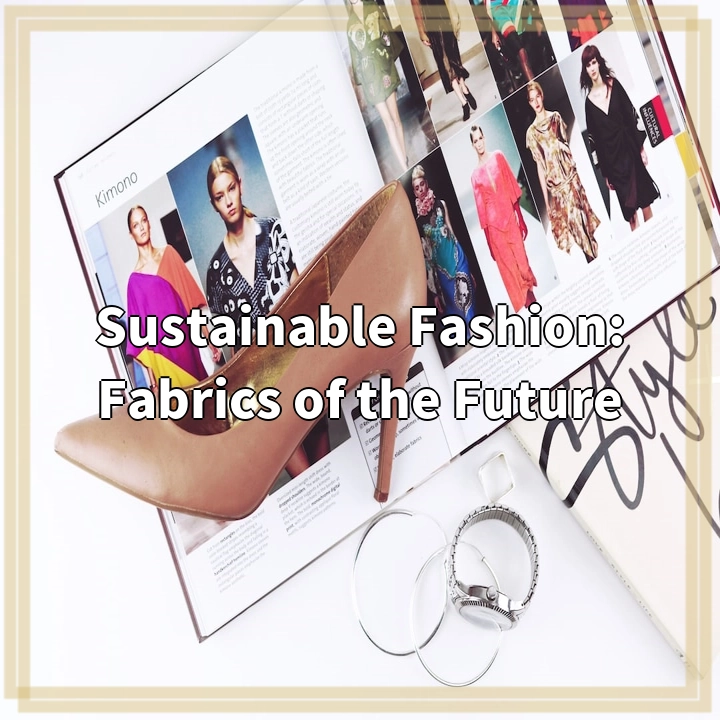
What is Sustainable Fashion: Fabrics of the Future?
Sustainable fashion, also known as eco fashion or ethical fashion, refers to the production of clothing, accessories, and textiles that are manufactured and designed with a focus on minimizing environmental impact, promoting social responsibility, and ensuring long-term sustainability. Fabrics of the future are innovative and eco-friendly materials that are being developed and used in the fashion industry to replace traditional fabrics that have a significant carbon footprint.
Real-World Problems Associated with Sustainable Fashion: Fabrics of the Future
Sustainable fashion faces several challenges and real-world problems in its pursuit of creating fabrics of the future:
1. Limited Availability
The development and production of sustainable fabrics are still at a relatively early stage, which means that the availability of these fabrics is often limited. This can make it difficult for fashion designers and brands to source and incorporate these materials into their collections, hindering their ability to create sustainable garments at scale.
2. High Cost
Due to the specialized manufacturing processes and limited production volumes, sustainable fabrics tend to be more expensive compared to conventional fabrics. This poses a challenge for fashion brands and consumers who may have budget constraints and are not able to afford sustainable fashion products easily.
3. Performance and Durability
Some sustainable fabrics, especially those made from natural fibers, may have limitations in terms of performance and durability. For example, they may be more prone to wrinkling, shrinking, or pilling compared to synthetic fabrics. This can create challenges for consumers who are accustomed to the convenience and durability of traditional fabrics.
4. Lack of Standardization
There is currently a lack of standardized certification and labeling systems for sustainable fabrics, making it challenging for consumers to identify and trust the eco-friendly claims made by fashion brands. This lack of transparency can lead to confusion and greenwashing, where companies falsely claim to be sustainable without substantial evidence.
5. Consumer Awareness and Adoption
One of the significant challenges is raising awareness among consumers about the importance of sustainable fashion and the benefits of using fabrics of the future. Education and outreach efforts are essential to encourage consumers to make more informed purchasing decisions and to promote the demand for sustainable fashion products.
By addressing these real-world problems, sustainable fashion can continue to evolve and make progress towards a more environmentally and socially responsible industry.

Solutions for Sustainable Fashion: Fabrics of the Future
While sustainable fashion and fabrics of the future face challenges, there are several solutions being pursued to address these issues:
1. Research and Development
To overcome the limited availability of sustainable fabrics, increased investment in research and development is necessary. This will lead to the discovery and creation of new eco-friendly materials that can be produced on a larger scale and meet the demand of the fashion industry.
2. Collaboration and Partnerships
Collaboration between fashion brands, textile manufacturers, and sustainable material developers is crucial. By working together, they can pool their resources and expertise to accelerate the production and adoption of sustainable fabrics, making them more accessible and cost-effective.
3. Technology and Innovation
Advancements in technology and innovations in textile production can address the issue of performance and durability of sustainable fabrics. By leveraging new manufacturing techniques, it is possible to enhance the functionality and longevity of these materials while maintaining their eco-friendly characteristics.
4. Certification and Transparency
The development of standardized certification and labeling systems can help consumers identify genuine sustainable fabrics. This would create transparency in the market and enable consumers to make informed choices when purchasing fashion items. Trustworthy certifications and clear labeling will help differentiate authentic sustainable products from greenwashing attempts.
5. Consumer Education and Outreach
Increasing consumer awareness through education and outreach is vital for driving the adoption of sustainable fashion. Promoting the benefits of using fabrics of the future and highlighting the environmental and social impact of traditional textiles can engage and empower consumers to choose sustainable options, creating a more demand-driven market.
By implementing these solutions, the fashion industry can gradually overcome the challenges and realize the full potential of sustainable fashion, creating a more environmentally friendly and socially responsible future.















